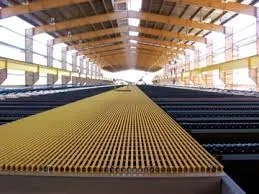
-
 Afrikaans
Afrikaans -
 Albanian
Albanian -
 Amharic
Amharic -
 Arabic
Arabic -
 Armenian
Armenian -
 Azerbaijani
Azerbaijani -
 Basque
Basque -
 Belarusian
Belarusian -
 Bengali
Bengali -
 Bosnian
Bosnian -
 Bulgarian
Bulgarian -
 Catalan
Catalan -
 Cebuano
Cebuano -
 China
China -
 China (Taiwan)
China (Taiwan) -
 Corsican
Corsican -
 Croatian
Croatian -
 Czech
Czech -
 Danish
Danish -
 Dutch
Dutch -
 English
English -
 Esperanto
Esperanto -
 Estonian
Estonian -
 Finnish
Finnish -
 French
French -
 Frisian
Frisian -
 Galician
Galician -
 Georgian
Georgian -
 German
German -
 Greek
Greek -
 Gujarati
Gujarati -
 Haitian Creole
Haitian Creole -
 hausa
hausa -
 hawaiian
hawaiian -
 Hebrew
Hebrew -
 Hindi
Hindi -
 Miao
Miao -
 Hungarian
Hungarian -
 Icelandic
Icelandic -
 igbo
igbo -
 Indonesian
Indonesian -
 irish
irish -
 Italian
Italian -
 Japanese
Japanese -
 Javanese
Javanese -
 Kannada
Kannada -
 kazakh
kazakh -
 Khmer
Khmer -
 Rwandese
Rwandese -
 Korean
Korean -
 Kurdish
Kurdish -
 Kyrgyz
Kyrgyz -
 Lao
Lao -
 Latin
Latin -
 Latvian
Latvian -
 Lithuanian
Lithuanian -
 Luxembourgish
Luxembourgish -
 Macedonian
Macedonian -
 Malgashi
Malgashi -
 Malay
Malay -
 Malayalam
Malayalam -
 Maltese
Maltese -
 Maori
Maori -
 Marathi
Marathi -
 Mongolian
Mongolian -
 Myanmar
Myanmar -
 Nepali
Nepali -
 Norwegian
Norwegian -
 Norwegian
Norwegian -
 Occitan
Occitan -
 Pashto
Pashto -
 Persian
Persian -
 Polish
Polish -
 Portuguese
Portuguese -
 Punjabi
Punjabi -
 Romanian
Romanian -
 Russian
Russian -
 Samoan
Samoan -
 Scottish Gaelic
Scottish Gaelic -
 Serbian
Serbian -
 Sesotho
Sesotho -
 Shona
Shona -
 Sindhi
Sindhi -
 Sinhala
Sinhala -
 Slovak
Slovak -
 Slovenian
Slovenian -
 Somali
Somali -
 Spanish
Spanish -
 Sundanese
Sundanese -
 Swahili
Swahili -
 Swedish
Swedish -
 Tagalog
Tagalog -
 Tajik
Tajik -
 Tamil
Tamil -
 Tatar
Tatar -
 Telugu
Telugu -
 Thai
Thai -
 Turkish
Turkish -
 Turkmen
Turkmen -
 Ukrainian
Ukrainian -
 Urdu
Urdu -
 Uighur
Uighur -
 Uzbek
Uzbek -
 Vietnamese
Vietnamese -
 Welsh
Welsh -
 Bantu
Bantu -
 Yiddish
Yiddish -
 Yoruba
Yoruba -
 Zulu
Zulu
frp car
The Rise of FRP Cars Revolutionizing Automotive Design and Performance
In recent years, the automotive industry has witnessed a remarkable transformation with the introduction and evolution of various materials and technologies. Among these innovations, Fiber Reinforced Plastic (FRP) stands out as a game-changer, significantly impacting car design, performance, and sustainability. FRP, composed of a polymer matrix reinforced with fibers such as glass, carbon, or aramid, has revolutionized how vehicles are built, leading to exciting developments in the marketplace.
.
Beyond performance, FRP plays a crucial role in enhancing vehicle safety. Its inherent strength allows for the design of crumple zones that absorb energy during an impact, protecting occupants. Moreover, FRP components can be tailored to meet specific safety standards, providing manufacturers with the flexibility to innovate while ensuring passenger security. This capability is particularly advantageous in creating vehicles that withstand various crash scenarios without compromising structural integrity.
frp car

Sustainability is another pivotal aspect driving the adoption of FRP in automotive manufacturing. As environmental concerns grow, the industry is searching for ways to reduce the carbon footprint associated with conventional materials. Many FRP composites can be designed to be recyclable or derived from sustainable sources, making them an appealing alternative. Furthermore, the lightweight nature of FRP also means that vehicles require less energy to operate, contributing to lower emissions and a reduced environmental impact over the vehicle's lifecycle.
The versatility of FRP extends to the aesthetic realm as well. Designers are increasingly experimenting with innovative shapes and finishes that were previously challenging to achieve with metal. FRP allows for more fluid and dynamic designs, enabling manufacturers to create unique models that stand out on the road. Customized bodywork, intricate contours, and vibrant colors are just a few examples of how FRP is redefining automotive aesthetics.
In conclusion, FRP is not just a trend; it represents a paradigm shift in the automotive industry. With its lightweight composition, enhanced safety features, sustainability potential, and design flexibility, Fiber Reinforced Plastic is paving the way for the future of car manufacturing. As the industry continues to evolve, we can expect to see more automotive innovations harnessing the power of FRP, ultimately leading to a new era of speed, efficiency, and style on the roads.









